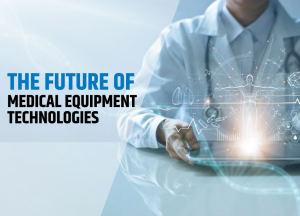As medical devices continue to become more sophisticated and efficient, greater efficiency and better patient care are becoming more accessible. With the development of new technologies, trends in the medical equipment industry can help us anticipate what treatments will be available. In this report, we explore how these trends are impacting patient care and what we can expect in the future for medical technology.
Computer-Aided Diagnosis (CAD).
Computer-aided diagnosis (CAD) is the use of computer systems to aid in the interpretation and analysis of medical images. Doctors can analyze pictures more quickly and completely with advanced computer technology helping to detect abnormalities that might otherwise go unnoticed. CAD also helps doctors make better diagnoses in difficult cases, as it takes into consideration a wider range of data and variables than what a doctor’s eye can catch.
Advanced Imaging Systems.
The future of medical equipment includes the integration of advanced imaging systems such as computer tomography (CT) and magnetic resonance imaging (MRI). These technologies have become essential for providing doctors with detailed information about patient anatomy. With the use of artificial intelligence, these machines can produce images of organs, body parts and more in extremely accurate details to detect diseases more precisely. As this area continues to expand, we can expect advanced imaging procedures to be used more regularly in clinicians’ practices.

Increased Access to Precision Medicine.
Medical equipment is becoming increasingly more precise and reliable. This will improve healthcare access and the quality of care with more accurate, faster diagnoses. Precision medicine is an emerging trend that allows doctors to personalize treatments based on an individual’s genetic and environmental factors. For instance, this technology can detect cancerous tumors before they become visible through traditional imaging systems. By leveraging medical equipment technologies in the future, we can expect to see improved treatments and outcomes for patients throughout the world.

More Affordable and Flexible Technologies.
We can also anticipate more cost-effective and flexible medical equipment technologies in the future. As medical tech becomes more sophisticated, it should be available to a wider variety of patients thanks to improved affordability solutions. Additionally, medical technology is becoming increasingly mobile and smaller. This will allow doctors to quickly diagnose and treat patients in remote areas with limited resources. Moreover, advanced medical equipment and wearables will enable earlier disease detection and continue to empower more active patient care.

Recalibration of the Doctor-Patient Relationship.
As both patient and doctor roles evolve due to advancements in medical technology, the traditional dynamic of the doctor-patient relationship is going to change. Doctors now have access to a greater wealth of data than ever before. This means that patients – relying on their doctors’ expertise more than ever – may benefit from a more personalized approach to diagnosis and treatment. However, this requires a restructuring of the healthcare system which can only be achieved with an increase in coordination among different stakeholders.

Artificial Intelligence (AI) in Medical Diagnosis and Treatment
AI has already proven to be a game-changer in healthcare, but its impact is only set to increase in the coming years. By analyzing data from patient records, AI algorithms can predict medical outcomes, assist in diagnosis, and provide more personalized treatment plans. Machine learning algorithms can analyze vast amounts of data to identify patterns and help doctors make more informed decisions. Furthermore, AI can assist in drug development and accelerate the development of new treatments.

Virtual and Augmented Reality (VR/AR) for Medical Training and Rehabilitation
Virtual and augmented reality technology is set to revolutionize medical education, training, and rehabilitation. These technologies can simulate medical procedures, allowing students and professionals to practice in a risk-free environment. In addition, VR and AR can be used for patient rehabilitation, helping them regain movement, balance, and strength after an injury or surgery.

Nanotechnology for Disease Detection and Treatment
Nanotechnology is the study and engineering of particles, materials, and devices on a nanoscale level. It has shown great potential for use in disease detection and treatment, especially in cancer treatment. Nanoparticles can target cancer cells without damaging healthy cells, making treatment more effective and less toxic for the patient.
Robotics in Surgery and Rehabilitation
Robotic technology has already transformed the field of surgery, but its applications are set to expand even further. In addition to robotic surgery, we can expect to see robotic exoskeletons for rehabilitation and movement assistance. Robotic exoskeletons can assist individuals with spinal cord injuries to regain mobility, and can help stroke patients to regain strength and balance.
Smart Implants for Disease Monitoring and Treatment
Smart implants are devices that can be implanted into the body to monitor and treat various medical conditions. These devices can be used to deliver medication directly to the affected area, monitor vital signs, and provide real-time data to healthcare professionals. In the future, smart implants may be used to treat neurological disorders, chronic pain, and other conditions.
In conclusion, these technological advancements are poised to make a significant impact on healthcare in the coming years. While there is still much to be done to make these advancements widely available, we can expect to see continued progress towards more personalized and effective healthcare. From AI-powered medical diagnosis to smart implants and beyond, these innovations hold great promise for improving the lives of patients and healthcare professionals alike.




